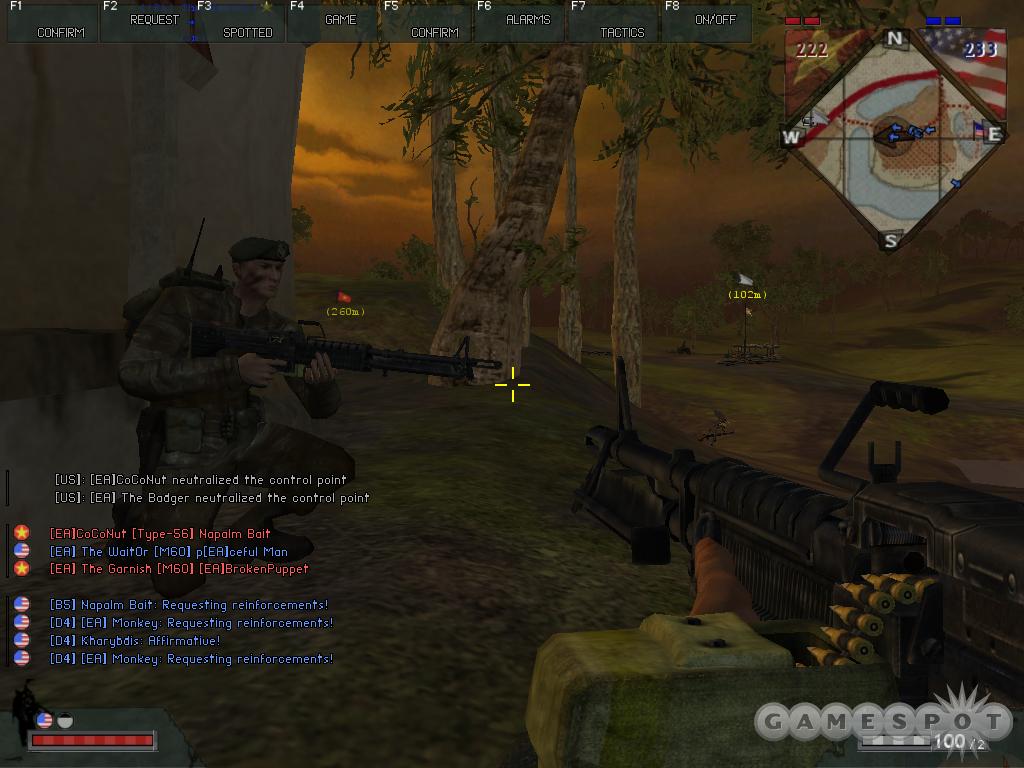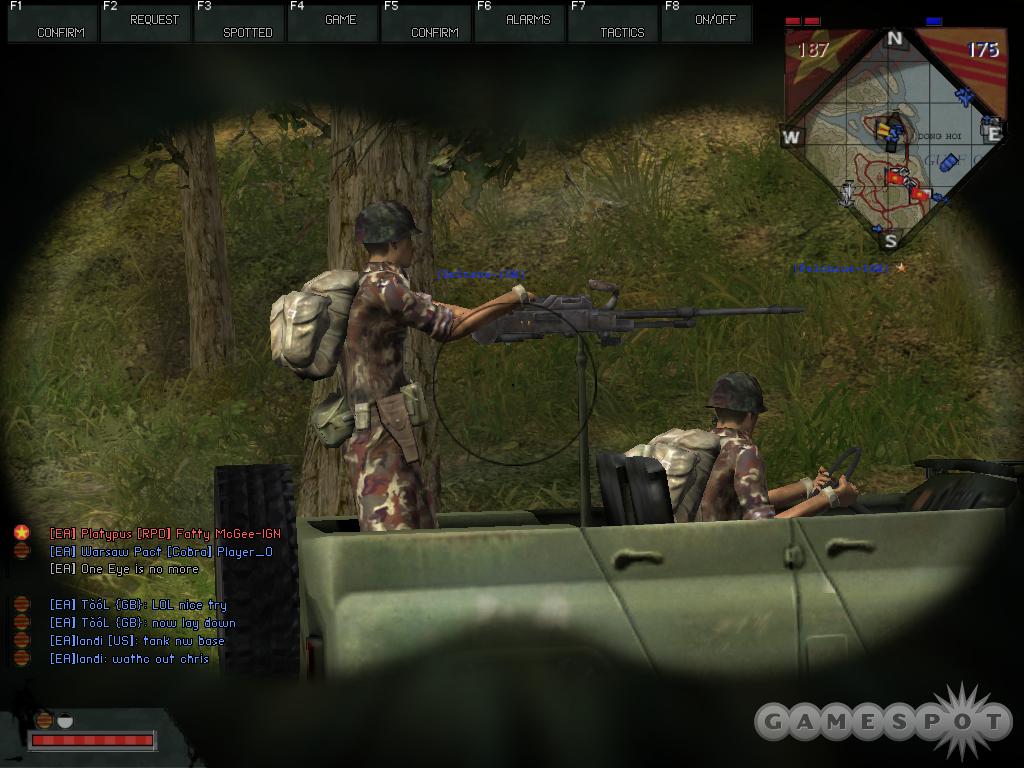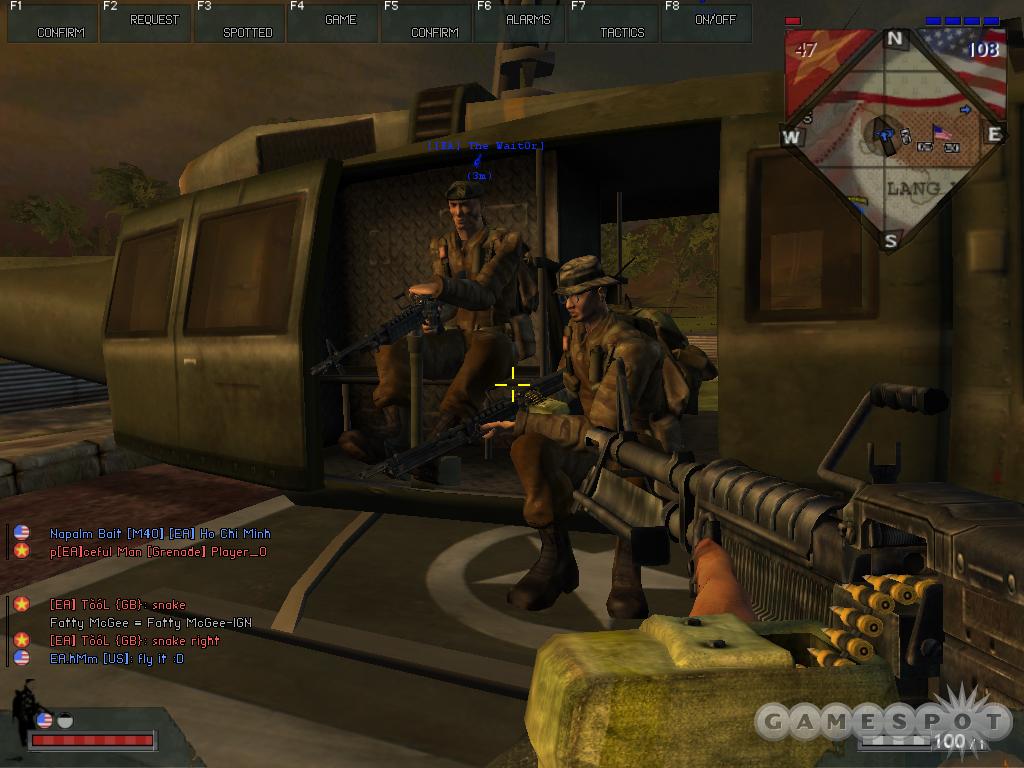Battlefield Vietnam Updated Hands-On Impressions
We're back from the steamy jungles of Vietnam, where we served our latest tour of duty. Get debriefed here.
First-person shooters have come a long way since the days of running down corridors shooting everything that wasn't you. Just take a look at Battlefield Vietnam, the next game from EA and Digital Illusions CE. We did. The new game will let you play as US allied forces who are up against opposing Vietnamese forces. Combat is waged on foot, in jeeps, in tanks, and in attack choppers and fighter jets, all while the tunes of some of the most exciting protest rock 'n' roll music from the 1960s and 1970s is playing. Also, did we mention that we played it?

Infantry ops play a different (and larger) role in Battlefield Vietnam than they did in the previous game. For starters, as you might expect from a new game, on-foot action certainly looks and sounds better. This can be attributed to the new game's detailed and normal-mapped characters and weapons models and its improved audio effects. The game even features complex character animations, like how assault troops pull back the slide on an M16 while reloading or how the ammo belt of a soldier carrying an M60 actually wobbles as he moves. Assault rifles sound much louder and are more distinctive, while near misses from incoming fire produce alarmingly high-pitched whines as bullets fly past you. Vehicles play classics, like Wagner's Ride of the Valkyries, along with ambient radio chatter. However, the various infantry classes seem more powerful, more varied, and more useful in the new game. Aside from the fact that the medic class from Battlefield 1942 has been folded into some assault kits, different classes also have far more varied arsenals. For instance, NVA scouts can not only carry sniper rifles, but they can also carry damaging caltrops that can be scattered around their own flags or scattered around their own sniper positions as defensive measures. In certain maps, NVA troops can even carry mobile spawn points. US heavy assault troops possess a formidable offense since they can carry both an antivehicle weapon, like an M72 LAW antitank rocket launcher, and the devastating M60 heavy machine gun. Both weapons are powerhouses against enemy infantry and incoming vehicles.

Like the on-foot action, Battlefield Vietnam's air battles seem different too. Many of the aerial engagements in the new game aren't the long-range, high-flying ones you may be familiar with from Battlefield 1942. Each side has only one plane equipped with bombs (the US has the A7 Corsair, while the NVA has the MiG-17); the other aircraft are all mainly fighter jets and attack choppers whose most effective attacks seem to be flying low to the ground for close-range strafing runs. Of course, this puts these aircraft directly in the line of fire from mounted turrets, antivehicle soldiers who are carrying grenade launchers, and concentrated fire from assault troops with M4 carbines or AK47s.
There's no doubt that skillful pilots will still enjoy great advantages in Battlefield Vietnam because they'll be able to travel quickly, transport their buddies behind enemy lines, and go on strafing runs. However, being a flyboy won't be a cakewalk either. Helicopters have an entirely new control scheme that lets them hover over targets, but they also require both caution and a bit of finesse to master. As with planes, helicopters have a throttle that helps them accelerate, and they can also turn and pitch. However, at a low altitude, overbalancing a chopper even the slightest bit may cause it to upend, thus causing it to crash. In the meantime, if you're not constantly on the move, you're a sitting duck for enemy fire.Then again, if you're an extremely skilled chopper pilot, you can hover over a flashpoint while your teammates use the side-mounted machine guns to clean house. Helicopters seem best when used in groups, especially the Huey Cobra, which allows the pilot to fire unguided missiles. However, the vehicle really comes into its own when a passenger uses the mounted cannon.

Battlefield Vietnam is clearly already in a very playable state, and while our experience with the previous game was certainly useful in getting started both on the ground and in the air, the new game seems to offer plenty of new gameplay options that should prove challenging even to Battlefield veterans. The game is currently on track for a March release.
Got a news tip or want to contact us directly? Email news@gamespot.com
Join the conversation